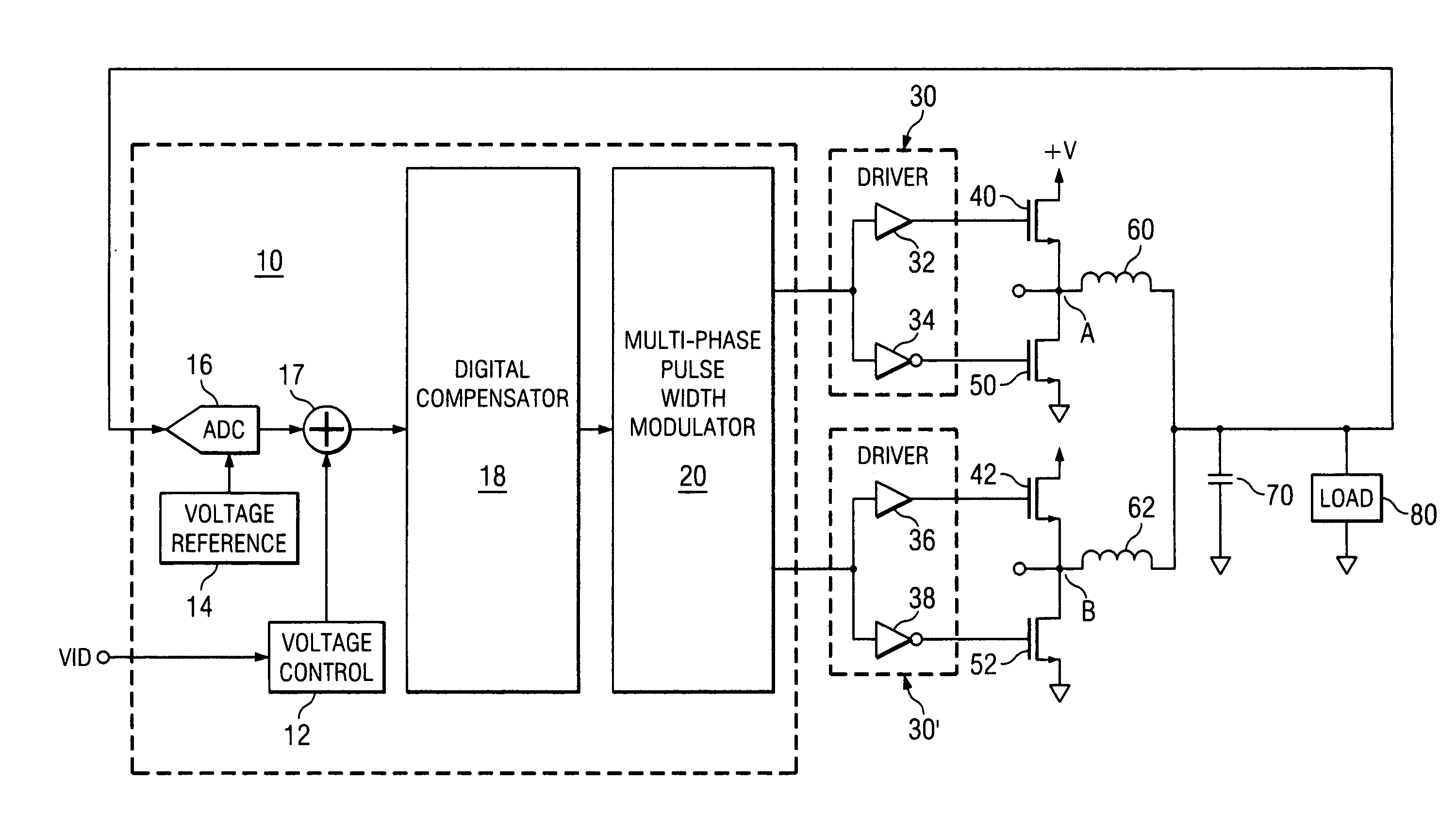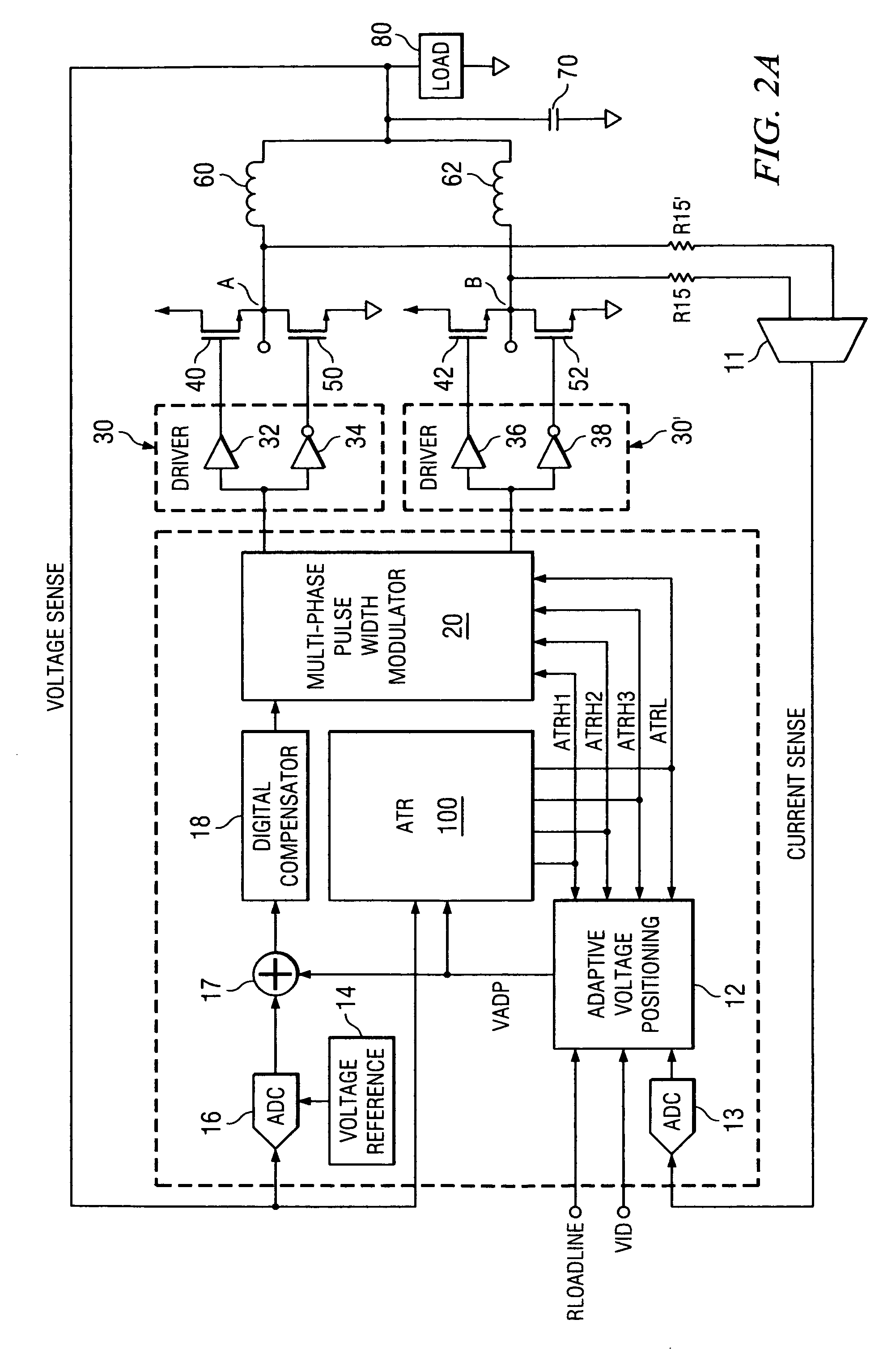Active transient response circuits, system and method for digital multiphase pulse width modulated regulators
a technology of active transient response and regulator, which is applied in the direction of power conversion system, dc-dc conversion, instruments, etc., can solve the problems of increasing the demands on the power regulation system, the power requirements of emerging leading edge technology microprocessors are becoming very difficult to meet, and the operating voltage decreases, so as to improve the transient regulation effect, minimize overshoot and undershoot, and improve the effect of transient regulation
- Summary
- Abstract
- Description
- Claims
- Application Information
AI Technical Summary
Benefits of technology
Problems solved by technology
Method used
Image
Examples
Embodiment Construction
[0061] The present invention may be described herein in terms of various functional components and various processing steps. It should be appreciated that such functional components may be realized by any number of hardware or structural components configured to perform the specified functions. For example, the present invention may employ various integrated components comprised of various electrical devices, e.g. resistors, transistors, capacitors, inductors and the like, whose values may be suitably configured for various intended purposes. Any actual values provided for such components as well as applied voltage levels and currents are intended by way of example and not limitation.
[0062] In addition, the present invention may be practiced in any integrated circuit application. Such general applications and other details that will be apparent to those skilled in the art in light of the present disclosure are not described in detail herein. Further, it should be noted that while v...
PUM
 Login to View More
Login to View More Abstract
Description
Claims
Application Information
 Login to View More
Login to View More - R&D
- Intellectual Property
- Life Sciences
- Materials
- Tech Scout
- Unparalleled Data Quality
- Higher Quality Content
- 60% Fewer Hallucinations
Browse by: Latest US Patents, China's latest patents, Technical Efficacy Thesaurus, Application Domain, Technology Topic, Popular Technical Reports.
© 2025 PatSnap. All rights reserved.Legal|Privacy policy|Modern Slavery Act Transparency Statement|Sitemap|About US| Contact US: help@patsnap.com



